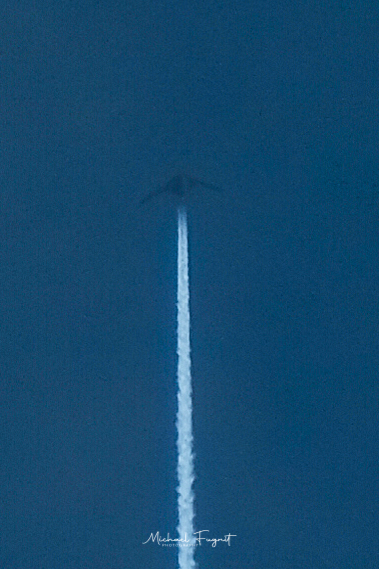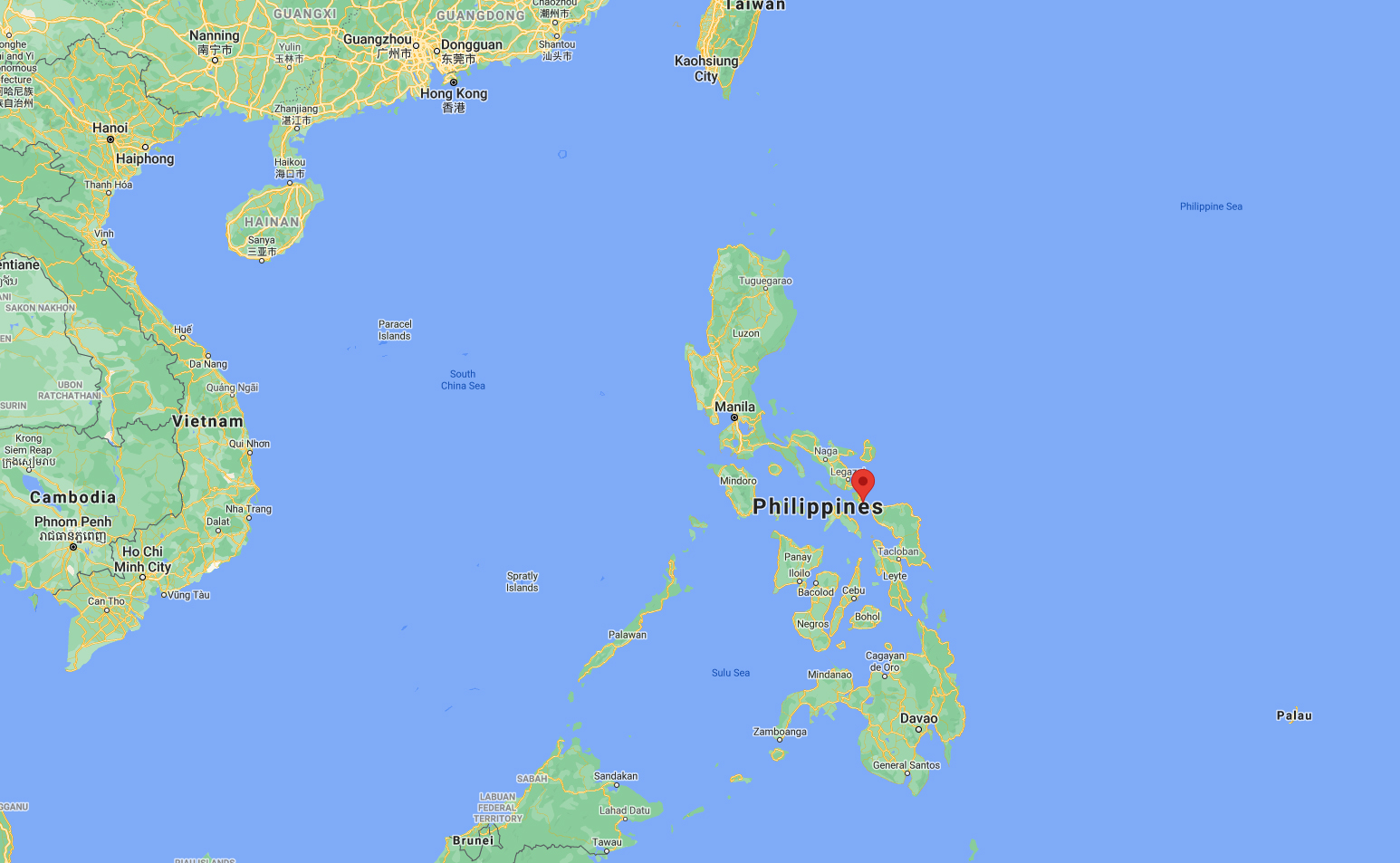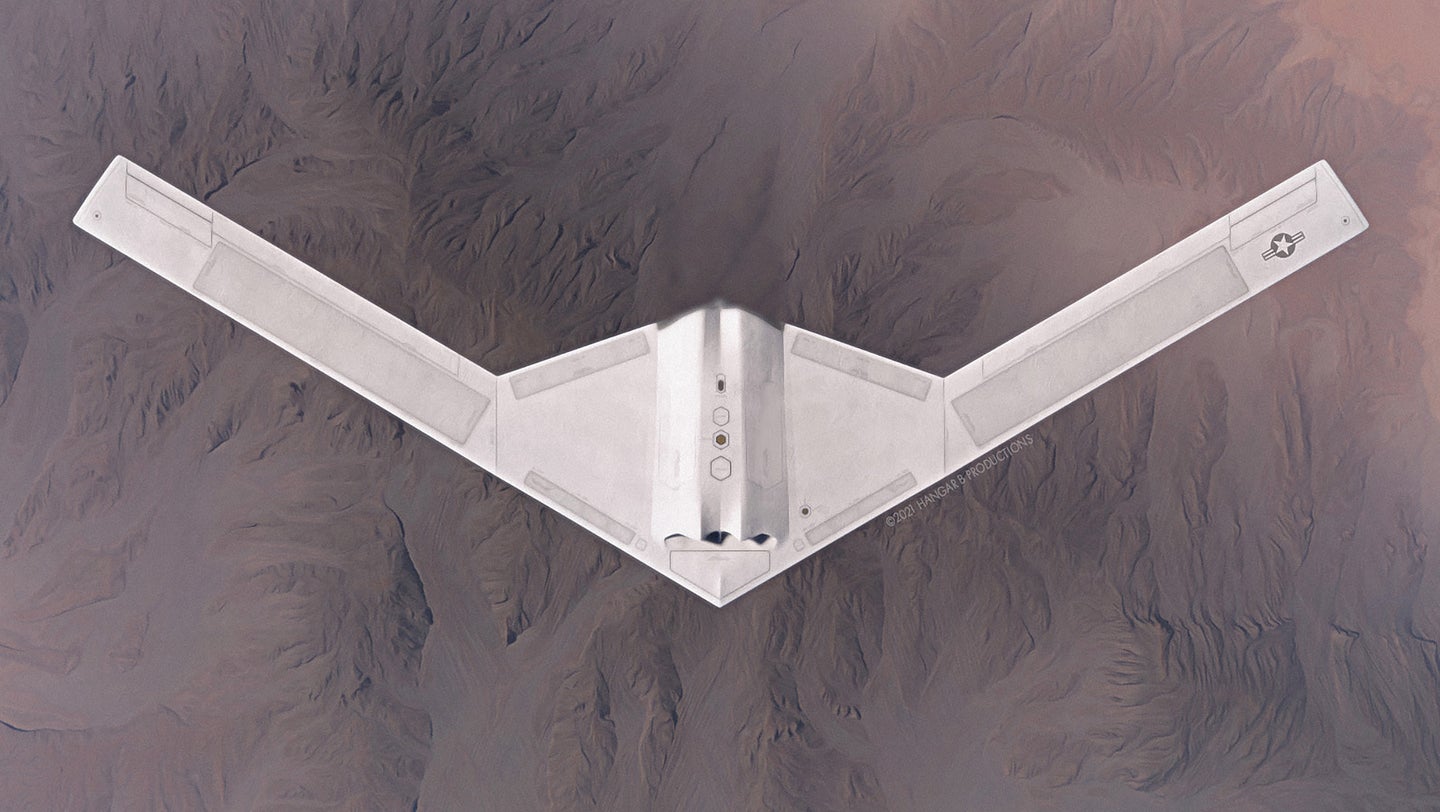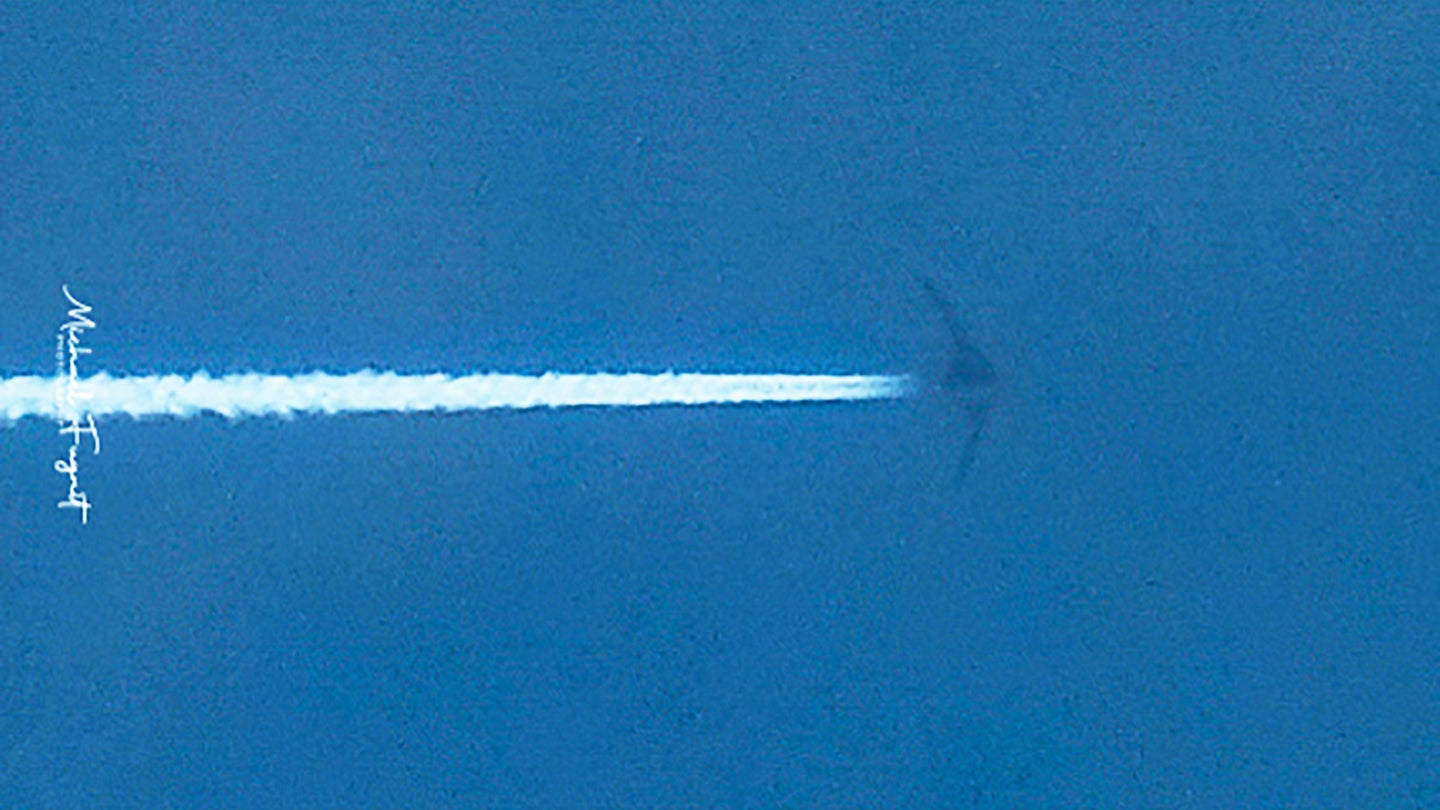The Philippines sits between the South China Sea and the Philippine Sea, two contentious and highly surveilled bodies of water that regularly see large amounts of military activity, especially Chinese and American. All types of military aircraft constantly frequent the skies above both seas, from bombers to drones, but on September 2nd, at around 6:15 AM local time, landscape photographer Michael Fugnit captured something very unique in his lens—what appears to be a stealthy flying wing aircraft with a diamond-shaped fuselage and slender wings, a centralized exhaust, potentially featuring twin engines, and a ventral fuselage bulge.
Fugnit tells The War Zone that he was up early in Santa Magdalena to catch the perfect sunrise when he noticed an aircraft overhead moving along at a good clip. The single image he took showed something that is unlike any normal commercial or military aircraft that usually criss-cross the skies over the region on a daily basis.

We must state that we cannot authenticate the image at this time, although we gave it a cursory examination in photoshop and nothing major stood out. We do not have any reason to believe the photographer fabricated it, either, although it is only prudent to underscore that the factual status of the photograph could change. We will continue to examine the image using various tools and are reaching out to other photo experts to give us their opinion.

At first glance, the aircraft depicted looks very much like the one seen in the supposed sighting of the so-called RQ-180 Sentinel high-altitude, long-endurance, very low-observable drone from last November. The RQ-180, which you can read our in-depth take on in this past special feature, is thought to be in very limited operation at this time as it continues with its clandestine development. Flying the aircraft in this area of the world would make sense because it is precisely the type of environment it was designed to operate in, but it could also just be transiting to another location, including back to the United States.
Also the timing, at sunrise, crossing the last major inhabited area before heading out into the desolate Pacific would make sense. The aircraft is thought to fly out of Area 51 in Nevada and Edwards Air Force Base in California, on extremely long-duration missions, but the isolated island of Diego Garcia, in the Indian Ocean, would be another operating location as it expands its operations. Special facilities there can support the B-2 Spirit stealth bomber and could likely be used to support the RQ-180, as well. The locale is also known for its use to support clandestine aircraft activities. Andersen Air Force Base on Guam is another potential operating location, but that is likely too high-profile for this stage of the aircraft’s development.

While the aircraft appears to be a good match to what we think the U.S. stealth HALE (high altitude, long endurance) drone known as the RQ-180 looks like, and the timing and location do make some sense, it is not the only possibility. China has a large number of stealthy flying-wing aircraft programs ongoing of all different sizes. Beyond its H-20 stealth bomber program, many stealth drone programs are publically underway, including a concept that is broadly similar to the RQ-180, known as the CH-7 Rainbow. China’s Star Shadow, which has been in development for years, may also have some similarities to the shape we see in the image. Once again, that is one of a number of potential Chinese stealth drones, some of which we know have been in flight testing for years, and there are others that surely remain cloaked in secrecy, that could potentially account for this sighting.

Because we do not know the approximate altitude the aircraft was flying at, it is possible that this may not have been a strategic platform, it could be something a bit smaller that flies for long periods of time at medium altitudes, instead. Regardless, the appearance of Chinese stealthy drones will become commonplace in the region in the years to come, but this could have been a clandestine operation of one of these systems that has made it at least into an operational testing state. Collecting critical intelligence from a penetrating reconnaissance platform on the countries China has a standing dispute over the South China Sea with does makes sense.
As for the possibility that this was China’s H-20 stealth bomber, the chances of that are very low. The aircraft has not been unveiled and is not even thought to be in major flight testing, let alone flying missions over foreign countries. What about a B-2 Spirit transiting the area? The image shows discreet features that are not indicative of the B-2. If the image is legitimate, the chances of it being a B-2 with multiple illusions occurring to make its planform and wing design look very different are quite remote. Also, at least at the time of publishing, radio interceptors and plane trackers have not noticed any B-2s moving through the region. The RQ-170 is another candidate. We know it has been adapted to work in the maritime domain and it has spent time in Asia, but that would be an odd place for it to be and the wings don’t look right. Still, it is a possibility to consider.
With that being said, there are two other wrinkles in this story. First, the U.S., U.K., India, Japan, and Australia just held one of their biggest joint exercises ever in the Phillippine Sea. This would have been of the very utmost interest to China. While those activities wrapped up officially by the end of August, assets were likely still in the region when this aircraft was sighted. The same could be true for any Chinese warships movements in the same area, which would be of very high U.S. interest.
The South China Sea and the Phillippine Sea, and especially where the two connect, are among the most highly surveilled geographic areas on the planet earth, with dozens of surveillance aircraft, especially from China, the U.S., and other regional stakeholders, working these areas on a daily basis.
Now for the final facet to this story, which may or may not be related. Local press in the Phillippines has reported on a scramble of fighters on a mystery, unresponsive aerial contact on the same day and around the same time as when the photo was snapped. Inquirer.net reported the following:
The Philippine Air Force (PAF) said Saturday it issued a “scramble order” for two FA-50 Aircraft light fighters to intercept an “unknown aircraft” that approached the Philippine airspace last Thursday.
PAF said the Philippine Air Defense Control Center (PADCC) detected an unidentified inbound aircraft in the Philippine Air Defense Identification Zone, approximately 120 nautical miles northwest of Bolinao, Pangasinan.
“The unidentified aircraft was heading towards Philippine airspace. Coordination with the CAAP classified it to be an unknown track of interest,” PAF said in a statement.
The unknown aircraft was at 21,000 feet flying at 265 knots heading northeast.
…
“The FA-50s flew at the maximum allowable speed towards the direction of the unknown aircraft. At about 4 minutes into the intercept, the unknown aircraft changed direction towards the North and increased its speed to 400 knots and headed away from the Philippine airspace. The intercept was terminated at 9:45 A.M.,” PAF added.
Air Force spokesman Lt. Col. Maynard Mariano told reporters that the agency could not tell the intent of the aircraft in approaching the country’s area of responsibility. He said there was no radio response from the unknown aircraft.
The biggest discrepancy here is the timeframe. This intercept ended some three and a half hours after the image in question was supposedly taken. That doesn’t mean the stealthy aircraft didn’t linger in the area after its picture was taken, as stealthy reconnaissance aircraft are pretty much built to do. The altitude is also too low for a HALE asset, but if the aircraft were a tactical platform, that may be possible. At the same time, a stealth aircraft like this would likely be equipped with advanced electronic warfare systems to help defend itself, so getting a firm altitude, assuming radar actually spotted it at all, may not have been possible.
So, we have a very intriguing image and a unique series of events and circumstances that surround it.
We wanted to get this up with some basic background and analysis. We will update this piece throughout the day as we can digest the image and work the story more. Finally, we want to underline once again, like any situation like this, it is possible this image is not authentic, so all information must be viewed as preliminary at this time.
Let us know what you think in the comments below!
UPDATE:
It has been a day and a half since this article was published and went viral. Nobody has been able to invalidate the authenticity of the image, including those we asked to take a look at it. This could always change, but that is where it sits as of now.
Author’s note: A huge thanks to Michael Fugnit for sharing his image with us. He really has some gorgeous photography on his Facebook page, make sure to check it out here.
Contact the author: Tyler@thedrive.com
